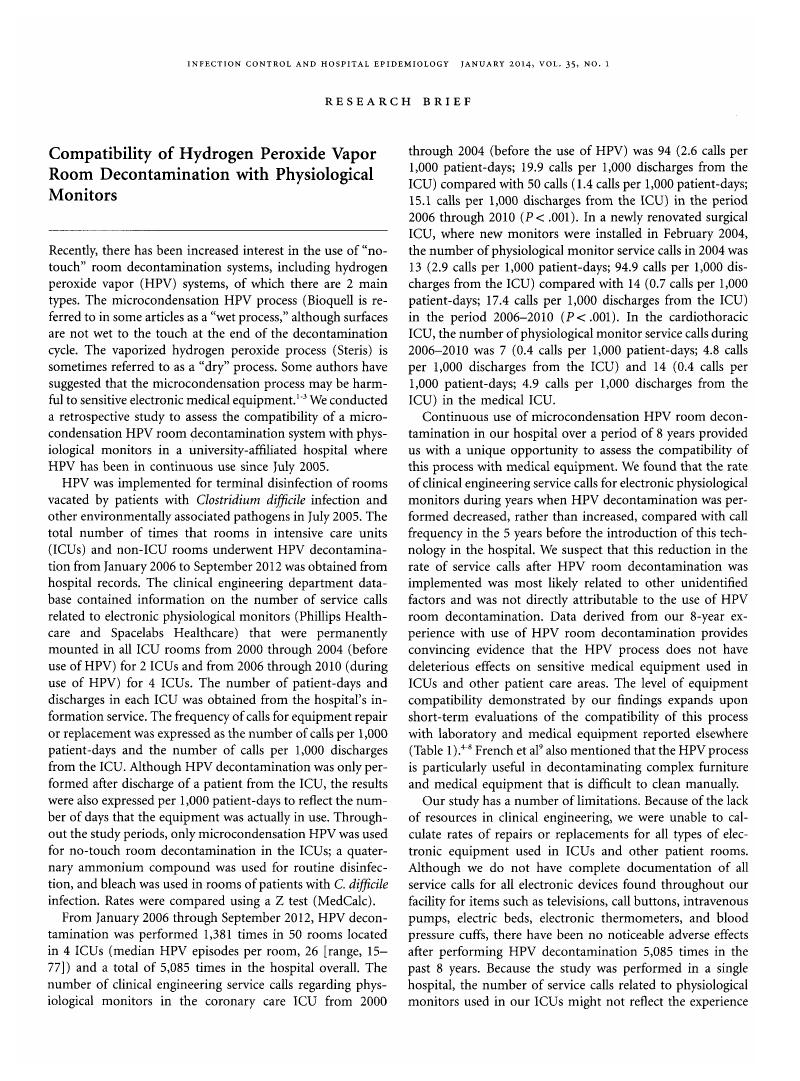Crossref Citations
This article has been cited by the following publications. This list is generated based on data provided by Crossref.
Blazejewski, Caroline
Wallet, Frédéric
Rouzé, Anahita
Le Guern, Rémi
Ponthieux, Sylvie
Salleron, Julia
and
Nseir, Saad
2015.
Efficiency of hydrogen peroxide in improving disinfection of ICU rooms.
Critical Care,
Vol. 19,
Issue. 1,
Lemmen, Sebastian
Scheithauer, Simone
Häfner, Helga
Yezli, Saber
Mohr, Michael
and
Otter, Jonathan A.
2015.
Evaluation of hydrogen peroxide vapor for the inactivation of nosocomial pathogens on porous and nonporous surfaces.
American Journal of Infection Control,
Vol. 43,
Issue. 1,
p.
82.
Barbut, F.
2015.
How to eradicate Clostridium difficile from the environment.
Journal of Hospital Infection,
Vol. 89,
Issue. 4,
p.
287.
Doll, Michelle
Morgan, Daniel J.
Anderson, Deverick
and
Bearman, Gonzalo
2015.
Touchless Technologies for Decontamination in the Hospital: a Review of Hydrogen Peroxide and UV Devices.
Current Infectious Disease Reports,
Vol. 17,
Issue. 9,
Otter, J.A.
Yezli, S.
Barbut, F.
and
Perl, T.M.
2020.
Decontamination in Hospitals and Healthcare.
p.
323.
Redondo González, Olga
Martínez Ramírez, Nora Mariela
and
Alhama Blanco, Pablo J.
2023.
Non-touch treatment to solve the persistent contamination of culture plates with Aspergillus niger in a clinical microbiology laboratory of Spain.
Environmental Science and Pollution Research,
Vol. 30,
Issue. 54,
p.
115734.
Ayub, Aaqib
Cheong, Yuen Ki
Castro, Jesus Calvo
Cumberlege, Oliver
and
Chrysanthou, Andreas
2024.
Use of Hydrogen Peroxide Vapour for Microbiological Disinfection in Hospital Environments: A Review.
Bioengineering,
Vol. 11,
Issue. 3,
p.
205.





